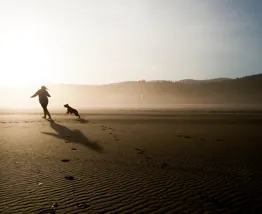Enrol in an online course today for flexible, self-paced learning—no fixed schedule required. Plus, enjoy lifetime access to course materials for convenient revisiting.
Why Walking Therapy?

After too much time online and indoors over the past year, many clients and therapists alike are desperate to meet in person again, and to get outside. I have been offering Walk & Talk therapy since 2018 (after incorporating equine-assisted psychotherapy into my practice in 2016). In this blog I want to explore what Walk & Talk therapy can offer by sharing my experiences with two clients, one of whom was at first too scared to meet me outside. For this client, moving her body in nature helped to ‘move’ trauma.
In Walk & Talk therapy, the walls of the therapy room are the agreed boundaries of the park or woods. We aim to finish the session in the same spot as we started. From the second session onwards, the client and I agree that they will decide the direction and pace, and that halfway through the session I may suggest some different options for the return route so that we arrive back in time. Eco-therapists believe that how we choose to navigate nature – its paths, puddles, people, animals, undergrowth, or whatever comes into our way or attention – is to be welcomed as a vital part of the therapeutic process.
With one client I sat, over many sessions, inside and ‘on’ different trees, often barefoot in the summer. She had a favourite, a big fallen tree. It looked magnificent and was safe to sit on, giving her a feeling of being cradled. To this day, she remembers this as her ‘healing tree’, and what a metaphor – it was no longer alive, yet aliveness (new plants, insect and bird life) sprang forth from it.
If clients struggle to feel comfortable outdoors, that can also be an important part of the process and the therapeutic dialogue. Another client comes to mind who had difficulties making decisions. She believed others knew better, or that she was ‘lesser’, and had a fear of judgement. Her history involved family violence and neglect, and she had experienced many illnesses and psychiatric treatments. At first, she was scared to meet outside. It felt too raw, too vulnerable. I would no longer be at a safe distance, all the way across the room. But after decades of therapy she wanted to try something different. In our early sessions she walked hesitantly, her arms protectively crossed around her body.
Over the course of a year, big changes happened. She started to become more at ease in her body, pointing at things, or daring to touch a leaf that had caught her interest. Then one session, we came to a Y-Junction. She slowed down as we approached it, then came to a standstill, looking down. We stayed like this for a few minutes. Suddenly she surprised me by loudly bursting out laughing in the middle of the forest.
“This is so typical, isn’t it?” she said. “I really want you to make the decisions for me! Damn it!”
We both had a good chuckle. This acknowledgement and realisation, arrived at through physical experience, was empowering for her. The underlying work of therapy is often for the client to find their own answers, and the confidence to trust in themselves and their own abilities. Stepping forward that day onto one of the paths proved to this client that she could decide things for herself – and that, even if she was scared in case the path was the ‘wrong’ one, somehow it would work out.
In the therapy room, these kinds of visceral, whole-body experiences are not possible in the same way. Outdoors, we can also be confronted with situations that serve as beautiful metaphors for real-life challenges, and offer profound meaning for clients. This is a very different experience to sitting indoors in a clinical room, and it always strikes me how much faster Walk & Talk therapy seems to progress.
Being confined to an assigned chair can keep both client and therapist ‘stuck’, in rigid body positions and rigid ways of thinking and feeling. Could this be a metaphor for stuckness – or worse, keep it in place?

















